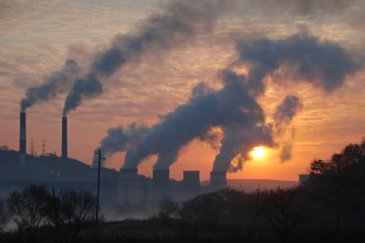If Australia met the daily pollution limits it currently has in place, 6,000 people would die, according to a pollution expert.
Australia's lucky that it doesn't have too many major pollution problems. But according to an expert from Queensland University of Technology (QUT) in Australia, that could change if the country follows the maximum daily limits, or 'standards', currently in place for six key outdoor pollutants - the kind that end up in our air and waterways.
These standards are put in place by Australia's National Environment Protection Measures (NEPM) and Associate Professor Adrian Barnett, a health statistician from QUT's Institute of Health and Biomedial Innovation, says that many industries believe that these levels are therefore "safe" thresholds to meet for health.
However, Barnett has now used a computer model to calculate what the health effects would be if the level of five of the six pollutants rose to just below "safe" limits across the cities of Melbourne, Sydney and Brisbane - and it's not safe at all.
"I've found that increasing pollution levels to just below the NEPM standards would cause the deaths of an extra 6,000 people each year - 2,600 in both Melbourne and Sydney and 800 in Brisbane," said Barnett in a media release.
The increase would also lead to an additional 20,700 people being hospitalised each year across the three cities.
"Study after study has shown there simply is no safe level of air pollution - health problems in the population rise in line with increases in average pollution levels," said Barnett in the release.
The World Health Organisation already estimates outdoor air pollution causes 3.7 million deaths every year, with 3,000 of those in Australia.
"It's understandable that the public could misinterpret the NEPM standards to mean anything below those levels is safe - but it's inexcusable for authorities to use this safe-or-dangerous interpretation," he added.
His commentary and the results of his study have been published in the Australian and New Zealand Journal of Public Health.
He is now urging Australian authorities to instead use thorough cost-benefit analyses in future environmental studies, to help measure whether resulting health problems would be balanced against the economic and societal benefit of the new infrastructure or industry doing the polluting.
"Changes also need to be made to the NEPM documentation and website to prominently state that the standards should not be used to judge whether individual projects are safe or dangerous," said Barnett.
In the future he hopes there'll be more awareness about the health cost of increasing pollutants even slightly.
"Locals concerned about the potential health effects have found it difficult to get past the argument that the increases are below the standards and therefore everything is fine," he said in the release. "But any new project that increases air pollution will always mean an increase in illness."
Want to use science and technology to solve major societal problems? Find out more about studying at QUT.
Source: QUT
